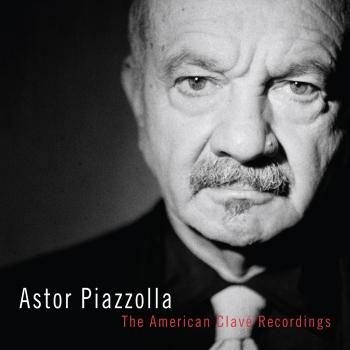Astor Piazzolla
Biography Astor Piazzolla
Astor Piazzolla
was an Argentine tango composer and bandoneón player. His oeuvre revolutionized the traditional tango into a new style termed nuevo tango, incorporating elements from jazz and classical music. An excellent bandoneonist, he regularly performed his own compositions with different ensembles. He is known in his native land as “El Gran Astor” (“The Great Astor”).
Born in Argentina in 1921 to immigrant Italian parents, Piazzolla spent most of his childhood with his family in New York City. While there, he acquired fluency in four languages: Spanish, English, French, and Italian. He also started playing the bandoneon, quickly rising to the status of child prodigy. He returned to Argentina in 1937, where strictly traditional tango still reigned, and played in night clubs with a series of groups. The pianist Arthur Rubinstein (then living in Buenos Aires) advised him to study with the Argentine composer Alberto Ginastera. Delving into scores of Stravinsky, Bartók, Ravel, and others, he gave up tango temporarily and worked as a modernist classical composer.
After winning a grant from the French government to study in Paris with the French composer and conductor Nadia Boulanger, he returned to Argentina in 1955, formed the Octeto Buenos Aires to play tangos, and never looked back. Upon introducing his new approach to the tango (nuevo tango), he became a controversial figure among Argentines both musically and politically. The Argentine saying “in Argentina everything may change – except the tango” suggests some of the resistance he found in his native land. However, his music gained acceptance in Europe and North America, and his reworking of the tango was embraced by some liberal segments of Argentine society, who were pushing for political changes in parallel to his musical revolution.
Piazzolla’s nuevo tango was distinct from the traditional tango in its incorporation of elements of jazz, its use of extended harmonies and dissonance, its use of counterpoint, and its ventures into extended compositional forms. Piazzolla also introduced new instruments that were not used in the traditional tango, including the flute, saxophone, electric guitar, electronic instruments, and a full jazz/rock drum kit.
Piazzolla played with numerous ensembles beginning with the 1946 Orchestra, the 1955 “Octeto Buenos Aires”, the 1960 “First Quintet”, the 1971 “Noneto”, the 1978 “Second Quintet” and the 1989 “Sextet”. As well as providing original compositions and arrangements, he was the director and Bandoneon player in all of them. He also recorded an album with the famous cellist Yo-Yo Ma and another one with jazz sax player Gerry Mulligan. His numerous compositions include orchestral work such as the “Concierto para Bandoneón, Orquesta, Cuerdas y Percusión”, “Doble-Concierto para Bandoneón y Guitarra”, “Tres Tangos Sinfónicos” and “Concierto de Nácar para 9 Tanguistas y Orquesta”, as well as song-form compositions that still today are well known by the general public in his country, like “Balada para un loco” (Ballad for a madman) and “Adiós Nonino” (dedicated to his grandfather) which he recorded many times with different musicians and ensembles. Biographers estimate that Piazzolla wrote around 3,000 pieces and recorded around 500.










